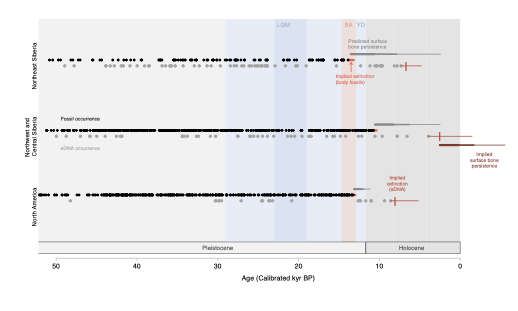When did mammoths go extinct?
Miller, J.H. and Simpson, C., 2022. When did mammoths go extinct? Nature 612, E1–E3. doi.org/10.1038/s41586-022-05416-3 link
A unique challenge for environmental DNA (eDNA)-based palaeoecological reconstructions and extinction estimates is that organisms can contribute DNA to sediments long after their death. Recently, Wang et al.1 discovered mammoth eDNA in sediments that are between approximately 4.6 and 7 thousand years (kyr) younger than the most recent mammoth fossils in North America and Eurasia, which they interpreted as mammoths surviving on both continents into the Middle Holocene epoch. Here we present an alternative explanation for these offsets: the slow decomposition of mammoth tissues on cold Arctic landscapes is responsible for the release of DNA into sediments for thousands of years after mammoths went extinct. eDNA records are important palaeobiological archives, but the mixing of undatable DNA from long-dead organisms into younger sediments complicates the interpretation of eDNA, particularly from cold and high-latitude systems.
